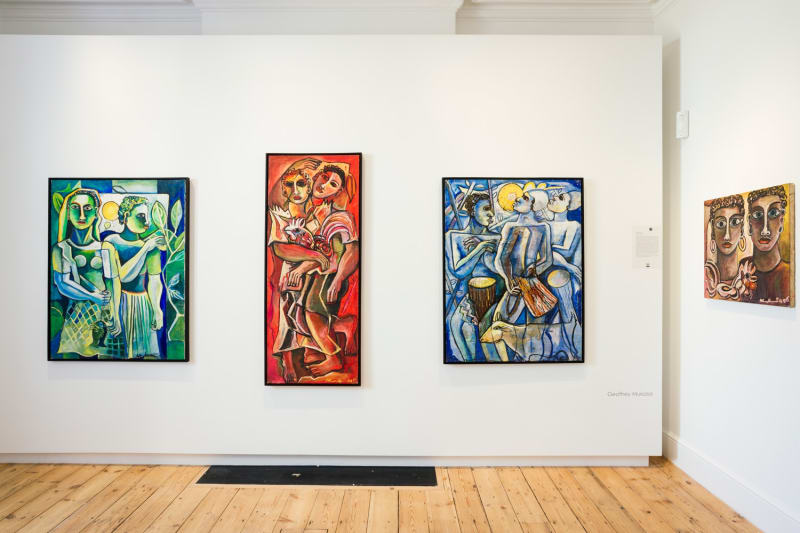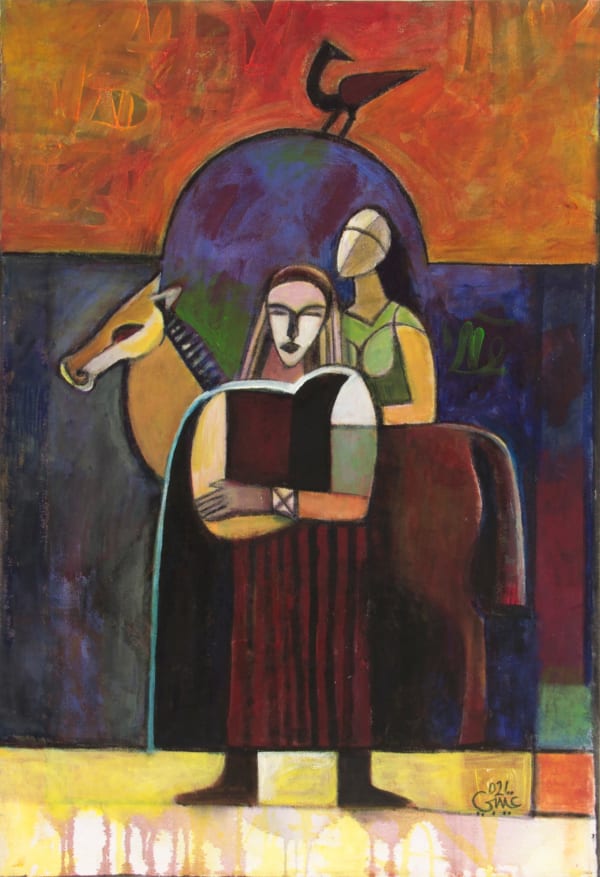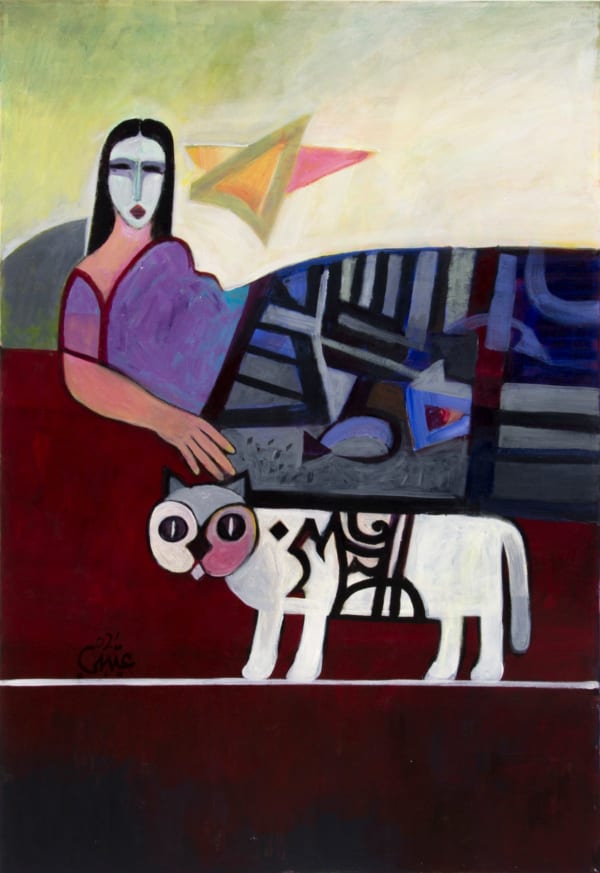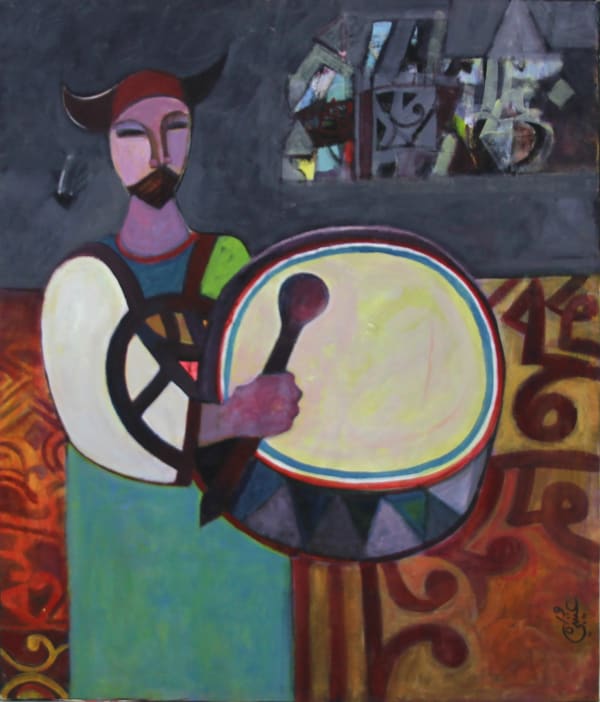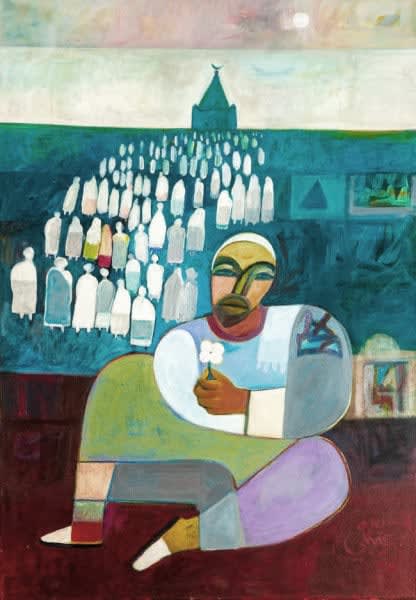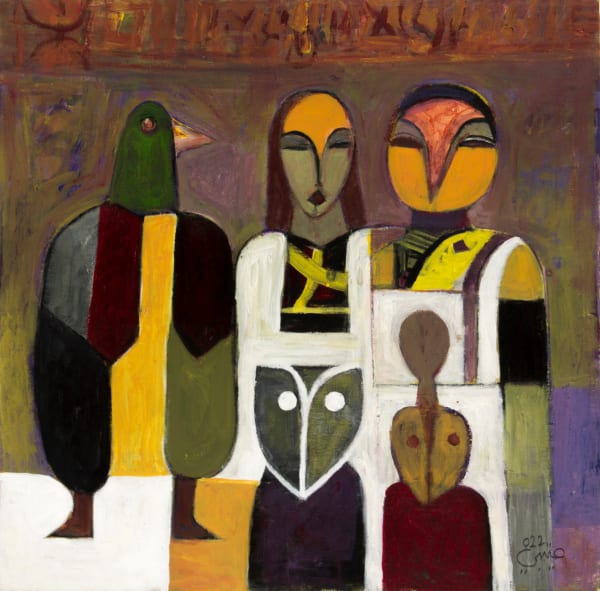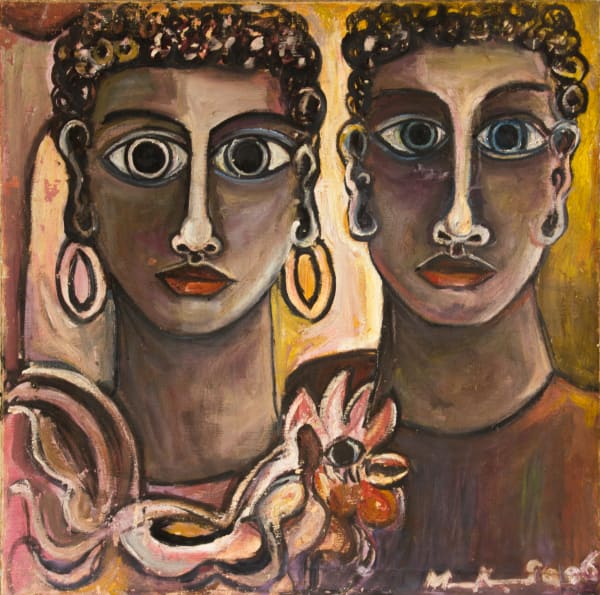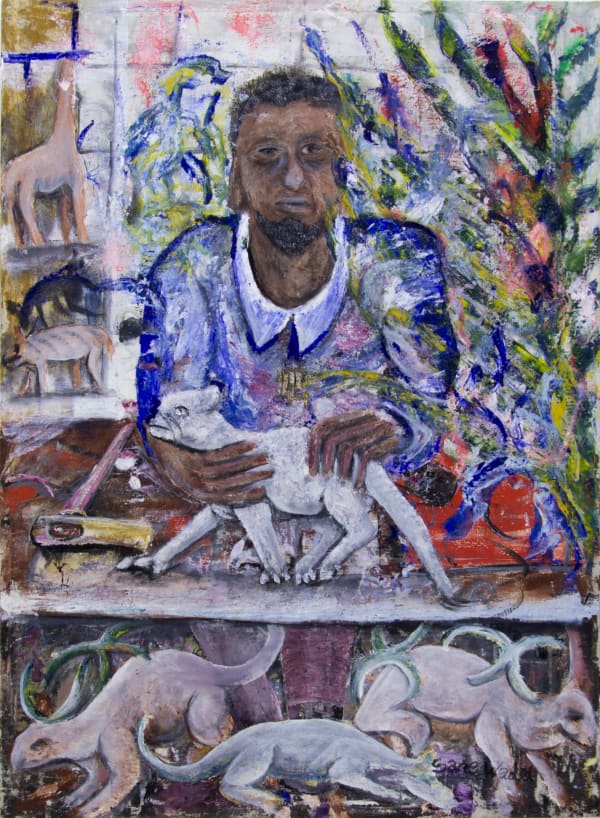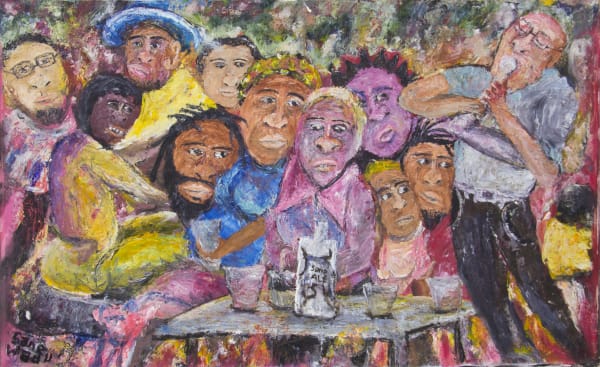East African Masters: Gallery 12, Cromwell Place, London
The exhibition runs until 16 October
(Wednesday to Saturday 10am - 6pm & Sunday 10am - 4pm).
For Circle’s second year showing at Cromwell Place, we have chosen to focus on the older generation with a presentation of four artists from Kenya, Sudan and Uganda; Geoffrey Mukasa, Theresa Musoke, Mohamed Otaybi and Sane Wadu. These artists, whilst well known in their home countries have little or no recognition internationally. Born in the 1940s and 1950s and practicing in newly independent countries, Sane Wadu gave up being a school teacher to become a self-taught artist in the 80s, Theresa Musoke left Uganda to study at the Royal College of Art in London, Mohamed Otaybi was part of the debate about Sudanese culture and heritage as a member or the Khartoum School and Geoffrey Mukasa fled the Idi Amin regime to studio Fine Art in India. All 4 artists have been part of influencing generations of East African artists and have earned their right to be celebrated and appreciated.
For more information please contact
Danda Jaroljmek danda@circleartagency.com, +254 722672938 and during the exhibition +44 7802733226
Geoffrey Mukasa (Ugandan, 1954-2009) is widely recognized as one of East Africa’s most influential painters. Born to a medical doctor and the daughter of a Chief, Mukasa spent part of his childhood in the King’s palace in Buganda. Following the coup by Idi Amin, Mukasa left Uganda in exile to study fine art at the Lucknow College of Art and Crafts in India. This period for Mukasa was one of much formal experimentation, shaped by his research into both Indian and European art movements. When Mukasa returned to Uganda he had developed a distinctive style of painting, frequently focusing on relationships and interactions between humans and their environment. During the early 1990s Mukasa became a key figure in the movement to revive cultural life in Kampala. This movement was seen as a unifying force and an inspiration for the nation’s recovery after years of military dictatorship. Mukasa returned to Uganda with great influence from his Indian mentor, the master painter M.F Husain, the depth of which was cemented by his inclusion in an exhibition of Indian Modern Art at Villa Vassilieff Gallery, Paris, 2017. In 2016, Mukasa’s work was shown in a solo presentation at Art Dubai Modern. His work is held in collections in America, Europe and Africa, and appears frequently at international auctions, including Sotheby’s and Bonhams.
Publications include Mukasa Geoffrey – the Artist’s Life in Uganda, AKA Gallery Kampala published by Maria Fischer, Rose Kirumira, Paul Lubowa and Josephine Mukasa, 2011.
Theresa Musoke (Ugandan, b. 1944) considers herself a semi-abstract painter and is best known for her expressive portrayals of East Africa’s abundant wildlife. Using a range of mediums to develop her imagery, her technique involves randomly dying cotton canvases and allowing the suggestive nature of the dye to guide her painting into evocative forms of animals and landscapes. Musoke first began to receive attention at the Margaret Trowell School of Fine Arts at Makerere university in Kampala. A true pioneer she was the first female artist to obtain a degree there. She went on to win the painting prize in 1965 and then obtained a scholarship to study for a postgraduate diploma in printmaking at the Royal College of Art in London. Musoke has dedicated her life to making art and is still a prolific creator at age 78.
Mohamed Abdella Otaybi (Sudanese b. 1948) is an influential figure in the Sudanese artistic movement. Otaybi graduated from the Khartoum College of Fine and Applied Arts, having begun working as an artist during a dynamic period of the 1970s. He was immersed in debates about cultural heritage and visual identity, which have stayed important topics for him and this amalgamation of Africanism, Islam, Arabism and Sudanese themes of identity are seen throughout his paintings. His painterly language has evolved over the years, using architectural structures, decorative motifs and calligraphic forms to echo the questions around cultural heritage that he finds so important. A gentle activist, his work has a romantic hue of Sudanese life, nature, music and heritage. Layering colour to create depth and vibration add to the mythological and dreamlike quality of his paintings, which reference a cultural past.
Otaybi has held many solo exhibitions in Khartoum, from 1970 to the present and has shown in international group exhibitions including the Sharjah Biennial, UAE, 1993; Modernism in Sudanese Art, British Museum, London, 2004; Sudan: Emergence of Singularities, P21 Gallery, London, 2017 and a solo exhibition The Lost Paradise at Circle Art Gallery, Nairobi, 2022. His work features in private and public collections including the National Museum in Sharjah, UAE. In December 2018 Otaybi was the focus of the article ‘Masters we Need to Master’ in Collector Magazine published by Art Africa.
Sane Wadu (Kenyan, b. 1954) began painting professionally in the 1980s, having given up his career as a teacher. He became one of Gallery Watatu’s most successful and iconic artists with distinctive, energetic and often humorous themes floating through his work. Spanning a long and distinguished career of over four decades, Sane’s contribution to the local art community is unparalleled. He co-founded the Ngecha Artists Association in the 1990s with Eunice Wadu, Wanyu Brush and Chain Muhandi, and alongside his artist-wife Eunice, continues to support young artists through The Sane Wadu Trust where they teach workshops every weekend from their studio in Naivasha. His paintings have been exhibited worldwide, including in the USA, Germany, South Africa, Japan and the UK, most notably in the seminal exhibition at the Whitechapel Art Gallery, Seven Stories about Modern Art in Africa in 1995 and its accompanying book.
Sane Wadu most recently had a retrospective at NCAI, Nairobi Contemporary Arts Institute, Kenya.
Circle Art Gallery, an overview
Director: Danda Jaroljmek
910 James Gichuru Road, Lavington, Nairobi
Tel: +254 722 672 938 | danda@circleartagency.com | www.circleartagency.com
Founded in 2012, Circle Art Gallery aims to provide a highly professional consultancy service to individual and corporate collectors and art institutions. Building new audiences through curating ambitious exhibitions and art fairs both locally and internationally. In 2015, we opened our permanent gallery space in Nairobi, aiming to be the foremost exhibition space in East Africa. Our intention was to create a strong and sustainable art market for East African artists by supporting and promoting the most innovative and exciting artists currently practicing in the region. We exhibit carefully curated, challenging and thought-provoking contemporary art and invite guest curators to work with us. Circle collaborates with a diverse group of contemporary artists across East Africa rather than representing specific artists. We participate in international art fairs and engage with the art community by providing a venue for presentations from local and international artists, curators, art critics, collectors and academics.
